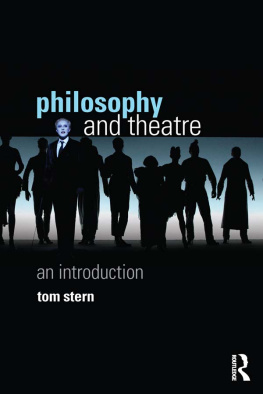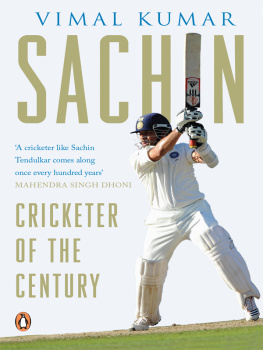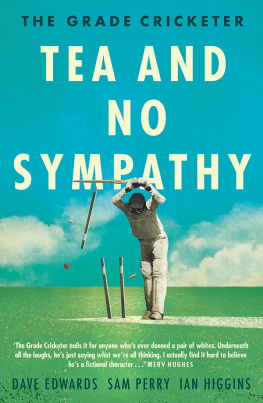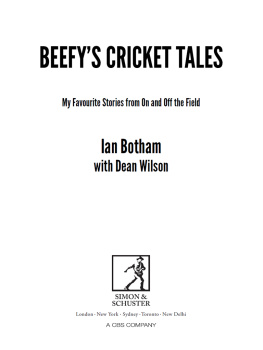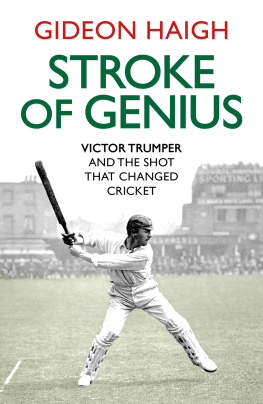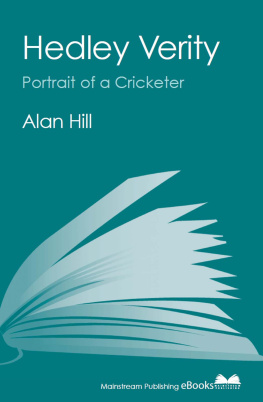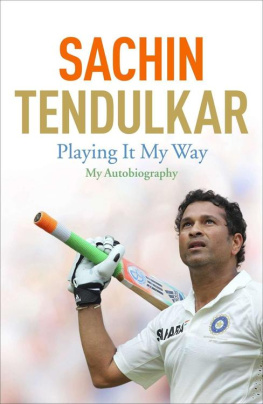MY FAVOURITE CRICKETER
MY FAVOURITE CRICKETER
EDITED BY JOHN STERN

First published in the UK in 2010 by
A & C Black Publishers Ltd
36 Soho Square, London W1D 3QY
www.acblack.com
Copyright in The Wisden Cricketer is owned by Wisden Cricketer
Publishing Limited. Copyright in the individual articles remains with
their respective authors.
Wisden is a registered trademark of John Wisden & Co
ISBN 978 1 4081 2340 9
All rights reserved. No part of this publication may be reproduced in any
form or by any means graphic, electronic, or mechanical, including
photocopying, recording, taping or information storage and retrieval
systems without the prior permission in writing of the publishers.
The Wisden Cricketer has asserted their rights under the Copyright, Design and
Patents Acts, 1988, to be identified as the authors of this work.
A CIP catalogue record for this book is available from the British Library.
This book is produced using paper that is made from wood grown in
managed, sustainable forests. It is natural, renewable and recyclable.
The logging and manufacturing processes conform to the
environmental regulations of the country of origin.
Typeset in Minion Pro by Palimpsest Book Production Limited,
Grangemouth, Stirlingshire
Printed and bound in WKT Company Ltd by Hong Kong
CONTENTS
Hero worship takes many forms. Some love larger than life, as Bonnie Tyler sang, others prefer honest and modest, as Peter Roebuck says of Harold Larwood. Some are wowed by raw talent or seduced by beauty and flair. There are the imitators and the obsessives, the autograph hunters and the wannabes, finding heroism or idolatry in the underdog or the lame duck.
They are all in this book. This is an assortment of cricket essays, compiled from The Wisden Cricketer magazines My Favourite Cricketer series, which has run every month since early 2005. The idea for the feature is sadly not my own but that of my friend and colleague Sambit Bal, the editor of the worlds leading cricket website Cricinfo.com, who kicked off the series in the now defunct Wisden Asia Cricket magazine.
It is a simple concept that offers endless variety. The players selected range from the all-time global icons to the self-effacing, small-town hero. Sometimes these apparently contradictory archetypes merge into one, such as Frank Keatings Tom Graveney or Gillian Reynolds Brian Statham.
The writers are also an assortment: journalists, broadcasters, cricketers, critics, novelists, actors and so on. All they have in common is a love of cricket and an ability to articulate it. There are those who observe from afar; there are childhood obsessions; some have subsequently met their heroes; for a few this has been an adulthood admiration, a rekindling or reassessment of childhood passions.
As much as this book is about hero worship, it is about inspiration. It is about the reasons and the circumstances in which people came to fall in love with cricket. The first time is always the best, writes the aforementioned Keating, whose luscious prose has adorned the pages of The Guardian for decades.
One of crickets many unique qualities is its ability to reveal personality. The length and pace of the game (even its shortest format) and the individual battles within a team context create an environment in which spectators, either at the ground or on television, can feel uncommonly close to the participants. And of course this proximity creates bonds, whether they be of curiosity, affection, disenchantment or simply a sense of feeling that one knows the players.
A five-day Test can stretch over 30 hours playing time if it goes its full distance, which is an awfully long time for 22 individuals to be in the public gaze. And even when a player is not actually on the field, he might be waiting to bat and at many grounds visible to the audience, especially so on television. So every emotion, every personality quirk, every mundane tic or affectation is exposed to the watching public.
It is this apparent accessibility, and indeed vulnerability, of cricketers even today in the ultra-professional and protective age that captures our hearts and minds so readily. And so we are drawn in and before we know it we are hooked.
John Stern
Editor,The Wisden Cricketer
www.thewisdencricketer.com
Illusions of grandeur
Mike Selvey on the Pakistani whose sleight of bowling hand
delivered magic and trapped a hundred batsmen leg-before
It must have been late August 11 years ago when Wasim Akram sent down what remains the most amazing delivery I have witnessed in half a century of watching and playing cricket. I say witnessed but that would be overstating things, rather like saying we have seen with our own eyes the illusionist David Copperfield make the Statue of Liberty disappear.
What the Test-match crowd at The Oval that day saw or we thought we saw defeated the naked eye, a sleight of hand so fast that it fooled batsman, umpire, fielders, press-box, spectators and, until a replay in very slow motion revealed all, television commentators and audience as well. And from it no wicket resulted, no run accrued. The scorebook will show another dot, with perhaps a scribbled aside that Akrams vehement lbw appeal was dismissed by Merv Kitchen or BC Cooray (I cannot for the life of me remember which) as if scarcely worthy of consideration.
Robert Croft was the England batsman and even he may not recall the incident. As was Wasims wont late in an innings, when the lower order was in and he was striving to finish things off and get back to the dressing room, he was pitter-pattering menacingly in from round the wicket to the right-hander, intent on hooping the ball into hapless leaden feet at a pace hovering around the 90s. At this stage in the innings there was reverse swing too and no bowler was better at exploiting it.
The sinuous delivery defeated not
just the batsman but the eye
and reflex of the umpire
This one went too much, though, we all saw that. From the hand it was directed at leg stump but swung further towards the leg side and on the full too. Croft saw runs, shifted his weight on to his front foot planted just in front of the crease and shaped to leg-glance an easy boundary. He missed, the ball struck his pad on the full halfway between instep and knee roll, Wasim roared and knowingly we chuckled at the impudence of such a frivolous appeal.
What followed set me agape. Here was a replay intending to show the ridiculous nature of the appeal; instead it revealed a feat unparalleled in my experience. The ball left Wasims hand and before it was midway down the pitch, and already on a considerable angle, it began to shape further towards the leg side. Croft registered this much.
But then, in perhaps the last 15 feet of its traverse from hand to pad, the ball changed direction and began to leave the batsman, straightening down the line of the stumps until it was able to slide past the closed face of Crofts glancing bat and cannon into his front pad bang in front of middle stump. It was as out as an lbw could possibly be but so late had the movement been, and so rapid, that this sinuous delivery had defeated not just the batsman but the eye and reflex of the umpire. Fluke? What does it matter. For the fraction of a second that this took, belief was suspended.
But that was Waz. Throughout his distinguished career the master manipulator was without question my favourite cricketer. Even as I write this there is a photograph to hand of him crouched down with an arm round our first Labrador, which we named after him. His status as the finest left-arm pace bowler of all time surely brooks no argument even in a thin field. His record in Test matches or in the varying shades of green in one-day cricket is remarkable (414 wickets in the former, 502 in the latter), the more so for a fast bowler.
Next page






